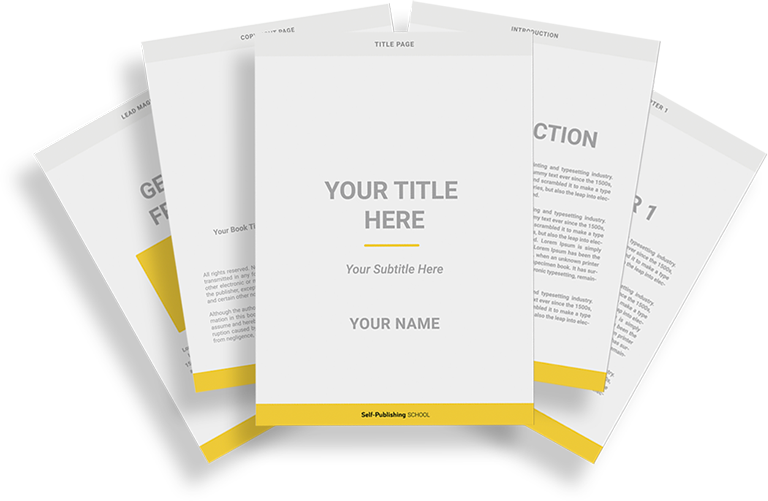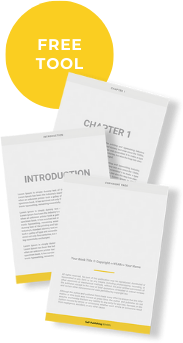Can you remember the last book that left you literally on the edge of your seat, heart pounding, white-knuckled grip, eyes glued to the page? Well-written tension can make us feel alive, transport us to another world, and fully immerse us in the lives of these characters.
How can we create that kind of tension in our own writing? Let’s explore some key techniques for crafting stories that can keep your readers hooked from beginning to end.
How to create tension in writing:


Book Outline Generator
Choose your Fiction or Nonfiction book type below to get your free chapter by chapter outline!
Book Outline Generator
Enter your details below and get your pre-formatted outline in your inbox and start writing today!
CONGRATULATIONS
Thanks for submitting! Check your email for your book outline template.
In the meantime, check out our Book Outline Challenge.

Why is tension important in writing?
Tension is a critical element in creative writing because it keeps the reader engaged, invested, and eager to know what happens next. When there is tension in a story, the reader becomes emotionally involved in the characters and their situation. They care about the outcome of the story and want to know how it will resolve. Tension creates a sense of urgency that propels the reader forward, making them feel excitement and anticipation.
Here are some reasons why tension is important in creative writing:
1. Tension creates conflict
Conflict is at the heart of any good story, and tension is what creates conflict. When there is tension, there is something at stake, whether it’s a character’s safety, reputation, or happiness. This conflict creates drama and excitement, keeping the reader engaged. You can’t have a story without conflict.
2. Tension builds suspense
Tension is also what creates suspense in a story. When the reader is on edge, wondering what will happen next, they are more invested in the story. This investment keeps them turning the pages, eager to find out what happens.
3. Tension builds characters
Tension can reveal a lot about a character’s personality, motivations, and values. When characters are faced with challenging situations, their true nature is revealed. This can make them more complex and interesting, adding depth to the story. What can you reveal about your characters by having them deal and interact with tension?
4. Tension helps with pacing
Tension is what creates pacing in a story. When there is tension, the story moves forward, driving the narrative towards its climax. This pace creates a sense of excitement and energy that keeps the reader engaged.
Overall, tension is an essential element of creative writing because it creates conflict, builds suspense, adds depth to the characters, and creates a sense of pacing. By creating tension in your story, you can keep your reader engaged and invested in the narrative, leading to a more satisfying and memorable reading experience.
Tips for creating tension in writing
Here are a few tips to help build tension in your own writing.
1. Include your characters
We care more about tension in a story if characters we love are impacted by it. The tension is built through character reactions. Do they feel apprehensive about something? What is personally on the line for your main characters? What bad things can happen to them because of this situation? Build on the character discomfort and fear to raise tension, because characters are audience avatars.
2. Build good villains.
Tension in books often stems from the antagonist or villain character. If you build a strong villain, the resulting tension will be believable and intriguing.
3. The stakes should rise throughout the story
We don’t start at 100% tension. To keep audiences engaged and believing the peril of the story, stakes and tension should start at their smallest and build to the climax of the story. This is most easily illustrated in TV series—think of the “first season villain” of your favorite show. Where is the tension now? The stakes should rise gradually throughout the story until it climaxes right before the end.
4. Give small moments of reprieve and reflection
There are two good reasons to break up tension with quiet moments. For one, if your story is straight tension with no breaks, your readers might develop a sort of numbness to it. In order to keep the tension cooking, give us breaks throughout. The second reason is that it gives your characters a chance to reflect on what’s happening, and what could happen if they don’t fix the problem. This will give the tension a chance to sit in your audience’s gut while they fret about what might happen next in these small windows of quiet.
5. Stir questions in your reader
Tension shouldn’t be handed to your readers on a platter. Leave some mystery to it! Let them wonder what’s going on, how it will end, and how the characters will respond. Foreboding often creates tension. An unknown evil creates tension. A lot of the time, the real stress is in the mystery.
6. Strong external conflict
Tension in stories comes from numerous places, but your external conflict should shoulder a big burden for it. This could mean building a strong villain, or just having a major problem for your character to solve that, if left unresolved, could be catastrophic.
7. But don’t forget internal conflict
But the internal conflict is also important! What is your character struggling with within themselves? How does that internal conflict affect the external conflict? The character should have to work through their internal problems in order to face the external conflict and come out the winner.
Internal monologue will be important here, as well as for those moments of reprieve and reflection we mentioned earlier.
8. Stack tension
Layering reasons for tensions can produce a more realistic tension with higher and higher stakes. This is one good way to keep the rising tension throughout—add more! Your character is being broken up with in a parked car? Have a truck slam into the back of it! (Or whatever.)
9. Use foreshadowing
Foreshadowing is a way of hinting at what’s to come, building tension by making your readers anticipate what might happen next. You can use different types of foreshadowing to suggest that something bad is going to happen, or to create a sense of foreboding.
10. Pay attention to pacing
Pacing is the rhythm of your story, and it can be used to create tension by speeding up or slowing down the action. You can also work with tension for pacing on a smaller scale, like if you use short sentences and paragraphs to create a sense of urgency, or longer ones to slow things down and build anticipation.
11. Employ cliffhangers
A cliffhanger is a way of ending a chapter or scene on a note of uncertainty or tension, leaving your readers wondering what’s going to happen next. This can be a good way to keep your readers engaged and eager to find out what happens next. Dangle a dangerous question right before you leave the room.
12. Create strong atmosphere
By placing your characters in a tense environment or situation, you can create an atmosphere of tension, for example, a haunted house, a dark alley, or a tense negotiation meeting. Here are some tips for writing a strong atmosphere.
Creating tension requires a delicate balance between giving enough information to keep the reader engaged and invested in the story, while holding back enough information to keep them guessing and wondering what might happen next.


Book Outline Generator
Choose your Fiction or Nonfiction book type below to get your free chapter by chapter outline!
Book Outline Generator
Enter your details below and get your pre-formatted outline in your inbox and start writing today!
CONGRATULATIONS
Thanks for submitting! Check your email for your book outline template.
In the meantime, check out our Book Outline Challenge.
